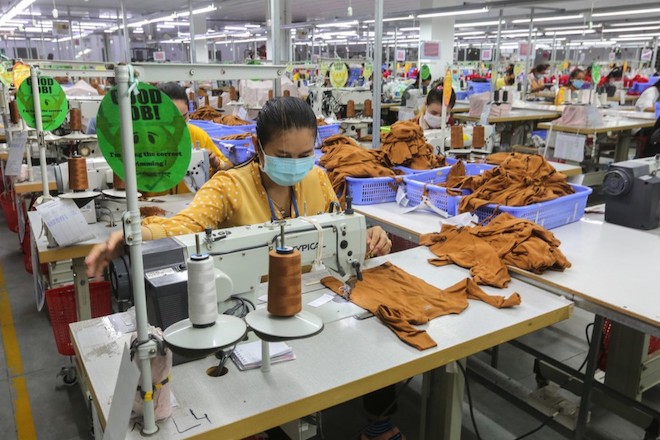
More than 2 years into the pandemic, economic recovery is beginning to gain momentum in the ASEAN+3 region. Continuing supportive policies and tapping new drivers of growth will be critical in sustaining the uptrend as countries cope with new COVID-19 variants, rising inflation, and supply disruptions from the war in Ukraine.
“Looking ahead in 2022, given the less supportive global policy settings, regional policymakers will have to undertake a crucial balancing act—avoiding a premature withdrawal of policy support in view of the still nascent economic recovery, while at the same time, facilitating the reallocation of capital and labor to new and expanding sectors, and rebuilding policy space to prepare for future risks,” said a new report from the ASEAN+3 Macroeconomic Research Office (AMRO).
According to a study from the Asian Development Bank, transforming Southeast Asia’s established tourism, garments, and agro-processing industries and leveraging advances in electronics and digital trade could support the region’s medium-term economic recovery.
The findings of these two reports were highlighted in last week’s webinar organized by AMRO and ADB, which both serve as the region’s policy advisors. The webinar was a side event of the 25th ASEAN+3 Finance Ministers’ and Central Bank Governors’ Meeting.
ASEAN+3 includes the 10 members of the Association of Southeast Asian Nations, Japan, People’s Republic of China, and Republic of Korea.
Sector-based approach
The meeting, which was co-chaired by Cambodia and the People’s Republic of China on 12 May, discussed macroeconomic challenges, pandemic policy support, growth opportunities, and financial cooperation. The finance ministers and central bank governors acknowledged the importance of avoiding misallocation of resources and ensuring support for new and growing sectors. The ADB–AMRO webinar continued the ministers and governors’ conversation on new drivers of growth and optimism.
“COVID-19 is both a major disruptor and a catalyst for change. The scarring effects from the pandemic on labor, capital, and productivity may have cast a shadow on long-term growth. But the pandemic has also spurred innovation in sectors, such as retail, finance, and health care, which might lift the region’s economies in the long run toward higher productivity-driven growth,” said AMRO Group Head and Lead Economist for Regional Surveillance Ling Hui Tan.
“Supporting industries with the competitive advantage to propel a green, resilient, and inclusive recovery will not only require sector-specific interventions by governments but crosscutting measures that encourage an enabling business environment, improved infrastructure, and stronger intra-regional linkages,” said ADB Director General for Southeast Asia Ramesh Subramaniam.
Opportunities and strategies
The ADB report examined the growth opportunities and potential strategies for the five sectors. COVID-19 has created new challenges for the tourism industry. There are indications that the pandemic could lead to a fundamental decline in long-haul international travel, an issue exacerbated by the adoption of digital tools for meetings and events. To rebuild the industry, the report recommends restoring tourism demand through strong marketing campaigns, safer travel standards, more diversified tourism offerings, better paid and more skilled workers, and stronger crisis management response to build industry resilience.
While the agricultural sector was less affected by COVID-19, the report urges governments in the region to add higher value agro-processing activities that can support a post-pandemic recovery. Strengthening this sector will require harmonized food standards, efficient and transparent supply chains, the use of technology and improved processes to raise product quality, streamlined regulations, and effective partnerships.
Structural challenges also face the region’s electronics sector. These include narrow diversification across electronics supply chains, low value-added products and processes, disruptive technologies which could bring negative employment impacts, and rapid changes in technology and consumption trends. To raise the dynamism of the electronics industry, the report highlights the need to develop industry specific supportive policies such as smoother coordination between local business, international firms, and governments; technological upgrading of special economic zones for electronics; incentives for greater research and development (R&D); and the development of skills and human capital.
The report also sees digital trade as having strong growth potential in Southeast Asia. Much of the region’s digital trade now concentrates on digital marketplaces and information technology and business process outsourcing (IT-BPO), while software development is picking up in some countries. As demand for digital products and services grows, it is important to enhance digital connectivity, invest in logistics and distribution facilities, develop an IT–BPO road map, support skills development and training, and rethink digital regulations to protect consumers.
With the boom in e-commerce, upgrading the garment sector—a significant employer of women—is also critical. Improving competitiveness through simplified business regulations, faster digital technology adoption, stronger R&D, a greater focus on culture-related garments, skills training, and establishing more flexible production and business models could support the industry’s growth.
The webinar also discussed policies to help strengthen the business environment, improve infrastructure, and crowd-in private sector participation to support these growth drivers, and the role of regional cooperation in building a better, greener, and more resilient ASEAN+3 region in a post-pandemic scenario.
This article was first published by BIMP-EAGA on 16 May 2022.

